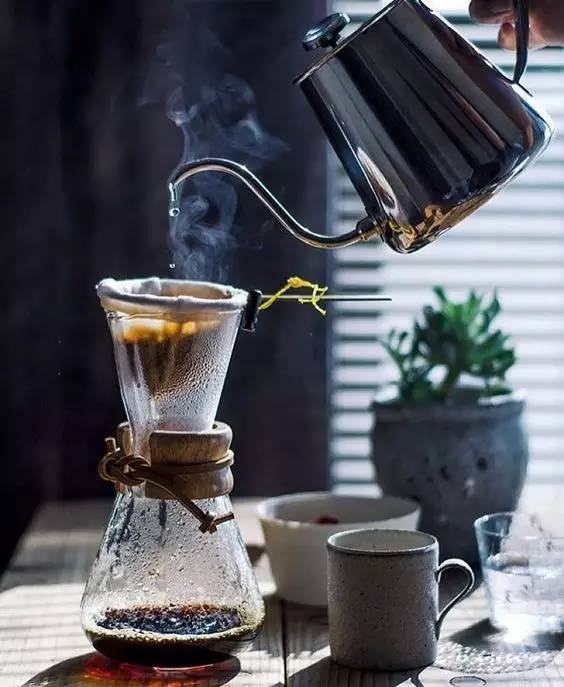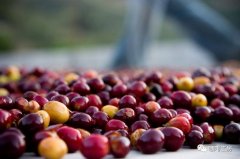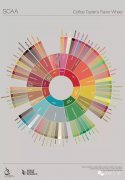Analysis of brewing condition | Coffee extraction temperature is determined by the thickness of grinding and the amount of powder.

For professional baristas, please follow the coffee workshop (Wechat official account cafe_style)
Extraction water temperature
High temperature for shallow baking and low temperature for deep baking
Low temperature for shallow baking and high temperature for deep baking
The higher the temperature, the more bitter, and the lower the temperature, the more sour it is.
The temperature will affect the rate of dissolution of coffee ingredients.
The aroma of high temperature extraction is better.
Low temperature extraction tastes better.
The temperature also affects the expansion of coffee powder.
The expansion of air is the biggest influence of high and low temperature extraction for deep and shallow baking.
The expansion of the air is also related to the thickness of the powder.
If you grind the air, it will expand badly.
When the air is ground, the expansion is weak.
The amount of air expansion also affects the exhaust and absorption speed of coffee powder.
The speed of exhaust and water absorption will affect whether the coffee powder is floating or sinking.
Analysis of cooking condition 1:
Under the condition of fine powder quantity and fine water flow
Steaming at low temperature is basically less likely to swell.
The air in the coffee powder is quickly driven out and sinks at the bottom to form a high-density filter layer.
The slow rushing of the small current can not make the powder layer tumble and release the flavor evenly.
The coffee extracted is obviously sour.
->
So high temperature extraction is used instead.
Make use of the massive expansion of air in the coffee powder
Let the coffee powder spend more time on the water.
Slowly extract the air with a small stream of water
Let the coffee powder sink slowly to form a filter layer
Can avoid sour taste
Status Analysis 2:
Under the condition that the amount of coarse powder is small and the water is tumbling
Extraction at high temperature
The air in coffee powder is powdery and easy to float on the surface of the water.
There is no powder deposit at the bottom of the filter to block the impulse of the large flow.
It causes a sense of astringency due to insufficient extraction.
Extraction at low temperature
Coffee powder is easy to deposit at the bottom with less air.
Although a larger flow of water is used to stir the coffee powder at the bottom
You can't flow the filter paper directly.
So what kind of water temperature is used to extract coffee?
It should be determined according to the thickness of grinding and the amount of powder.
On the contrary, it is not judged by the depth of the baking degree.
Low temperature for rough grinding and high temperature for fine grinding
Powder is used more at high temperature and less at low temperature.
High temperature for deep grinding and low temperature for rough grinding
Only the medium-baked coffee is brewed.
High temperature will be bitter, low temperature will be sour
Other temperatures should only affect the flavor and taste.
Important Notice :
前街咖啡 FrontStreet Coffee has moved to new addredd:
FrontStreet Coffee Address: 315,Donghua East Road,GuangZhou
Tel:020 38364473
- Prev

Introduction to the subclassification of common coffee varieties in cafes
For the exchange of professional baristas, please pay attention to the coffee workshop (Wechat official account cafe_style) coffee beans are divided into three original systems: Arabica coffee beans, also known as Arabica coffee beans, robusta coffee beans, also known as Congo coffee beans, Libyan coffee beans, also known as Liberian coffee beans, there are more than a hundred common cultivated species in the world today, mostly belonging to three original systems and several hybrids.
- Next

Coffee terminology | how to professionally express the flavor and taste of coffee
Professional baristas please follow the coffee workshop (Wechat official account cafe_style) Flavor [flavor] is the overall impression of aroma, acidity, bitterness, sweetness and mellowness, which can be used to describe the overall feeling of coffee. Acidity [acidity] is the acidity and strong quality of coffee. The acidity referred to here is different from bitterness or acidity (sour) and has nothing to do with pH.
Related
- Beginners will see the "Coffee pull flower" guide!
- What is the difference between ice blog purified milk and ordinary milk coffee?
- Why is the Philippines the largest producer of crops in Liberia?
- For coffee extraction, should the fine powder be retained?
- How does extracted espresso fill pressed powder? How much strength does it take to press the powder?
- How to make jasmine cold extract coffee? Is the jasmine + latte good?
- Will this little toy really make the coffee taste better? How does Lily Drip affect coffee extraction?
- Will the action of slapping the filter cup also affect coffee extraction?
- What's the difference between powder-to-water ratio and powder-to-liquid ratio?
- What is the Ethiopian local species? What does it have to do with Heirloom native species?

